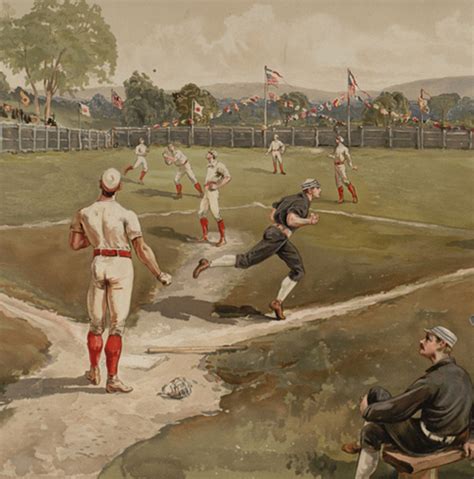Explore the impact of analytics on player performance, in-game decisions, scouting, team strategies, and fan engagement in sports. Discover key insights and trends.In the ever-evolving landscape of modern baseball, analytics plays a pivotal role in transforming how teams approach management, strategy, and player development. Gone are the days of relying solely on traditional scouting or anecdotal evidence; today, data-driven insights guide decisions at every level of the game. From evaluating player performance to optimizing in-game strategies, analytics has become indispensable for coaches, managers, and front office executives alike. This article explores the multifaceted impact of analytics in baseball, shedding light on how it shapes player evaluations, enhances decision-making, refines scouting processes, and even enriches the fan experience. Join us as we delve into the essential role analytics plays in creating a competitive edge in the world of baseball management.
Understanding The Role Of Analytics In Player Performance Evaluation
In modern baseball management, The Role of analytics has become integral to evaluating player performance. Teams are using advanced metrics and data analysis to gain insights into players’ strengths and weaknesses, ultimately influencing decisions regarding player acquisitions, training, and game strategy.
Traditional statistics like batting average or earned run average (ERA) provide a basic understanding of a player’s performance, but they fail to capture the complexities of the game. In contrast, analytics introduces sophisticated metrics such as on-base plus slugging (OPS), weighted on-base average (wOBA), and fielding independent pitching (FIP) that offer a more nuanced view of a player’s contributions on the field.
For example, OPS combines a player’s ability to get on base and hit for power into a single number, making it easier for teams to evaluate offensive talent. Similarly, wOBA assigns different weights to each type of hit, providing a more accurate measure of a player’s offensive performance. These metrics help managers and front offices to identify undervalued players who may excel in certain situations, thus optimizing their rosters.
Furthermore, analytics provides tools for in-depth video analysis, allowing coaches to dissect players’ mechanics and decision-making processes. This aids in targeted training programs tailored to individual players, improving their skills and overall contributions to the team.
Overall, the integration of analytics into player performance evaluation allows baseball teams to make informed decisions that can lead to enhanced team performance, strategic advantages during games, and ultimately, increased chances of success in the highly competitive MLB landscape.
How Analytics Enhances In-Game Decision Making For Managers
In modern baseball, the role of analytics extends far beyond player statistics and performance evaluations. One of the most significant areas where analytics comes into play is in in-game decision making for managers. With the volume of available data, managers can now make more informed choices that can drastically influence the game’s outcome. Here are some crucial ways analytics impacts their decision-making process:
- Real-Time Data Analysis: Managers have access to real-time analytics during games, allowing them to react quickly to changing situations. This includes pitch selection, defensive alignments, and even base running decisions, providing a competitive edge.
- Matchup Statistics: Data on player matchups can guide managers in making critical decisions, such as when to pull a pitcher or which batter to substitute. This information helps to maximize the likelihood of favorable outcomes.
- Situational Awareness: Advanced metrics offer insights into various game situations, such as runners on base or outs. Managers can utilize these insights to make strategic calls, like whether to play conservatively or take risks.
- Predictive Modeling: By analyzing past performances and trends, analytics can help predict potential outcomes of specific plays. This can shape decisions related to stealing bases, bunting, or shifting defensive strategies.
Furthermore, one of the notable advancements in the role of analytics is the integration of technology, such as camera systems and wearable devices, that provide a wealth of information on player physiology and mechanics. Understanding this data allows managers to make strategic substitutions based on player fatigue or performance dips, ultimately optimizing their roster’s effectiveness during critical game moments.
The profound impact of analytics on in-game decision making cannot be understated. Managers who effectively utilize these insights are more equipped to navigate the complexities of games, leveraging data to enhance their tactical approaches and ultimately drive team success.
The Role Of Data In Scouting And Talent Development
The integration of analytics in baseball has significantly transformed how teams approach scouting and talent development. In this data-driven era, the role of data is not just supplementary but foundational in identifying and nurturing prospective players.
One key aspect of using data in scouting involves analyzing player statistics and performance metrics at various levels, from high school and collegiate leagues to minor and major leagues. Teams now utilize advanced metrics such as exit velocity, launch angle, and on-base plus slugging (OPS) to assess a player’s potential impact on the field. These metrics provide deeper insights than traditional stats, revealing a player’s capability and readiness for professional play.
Moreover, data analytics is invaluable in player development programs. By employing performance tracking technology, teams can monitor a player’s progress over time, pinpointing areas that require improvement. This allows coaches to tailor workout and training regimens to better develop specific skills, whether it be pitching mechanics or batting techniques. For instance, using tools like TrackMan or Rapsodo, teams can gather high-speed data to refine a pitcher’s delivery or optimize a batter’s swing.
Additionally, the role of data extends to the psychological and physical aspects of player development. Analytics can help teams evaluate how a player deals with pressure situations, which is crucial for long-term success. By studying player responses during high-stakes scenarios, organizations can identify mental resilience and readiness, guiding their developmental strategies accordingly.
The role of data in scouting and talent development is critical in shaping effective teams. The marriage of traditional scouting with data-driven insights paves the way for holistic evaluation and enhancement of players, ensuring that the future of baseball remains bright and competitive.
Using Analytics To Optimize Team Strategies And Lineups
In the modern landscape of baseball, analytics plays a pivotal role in shaping strategic decisions around team lineups and overall game plans. By leveraging advanced data analysis, managers and coaching staff can gain a profound understanding of player performance, strengths, and weaknesses, which ultimately impacts the role players take on during games.
One of the primary ways analytics is applied is through the evaluation of matchup data. By analyzing historical performances against specific pitchers, teams can optimize their batting order to enhance offensive productivity. For instance, identifying which players have the highest batting averages against particular pitching types allows managers to place the most effective hitters in crucial lineup positions.
Additionally, defensive alignment is increasingly influenced by statistical insights. With the advent of data tracking technologies, teams can assess which defensive placements minimize the likelihood of runs. Analytics can show the probable direction of batted balls based on a player’s hitting tendencies, enabling infielders and outfielders to position themselves more advantageously.
Moreover, the optimization of player usage is significantly enhanced through analytical tools. Teams evaluate player fatigue levels, injury histories, and performance metrics to decide when to rest players or how to best utilize a bench player in specific situations. This ensures that the team remains competitive throughout the season and avoids burnout during key stretches.
The role of analytics extends beyond mere statistics; it shapes the very framework through which baseball teams approach strategies and lineups. By harnessing the power of data, organizations can develop a comprehensive strategy that maximizes their chances of success both on and off the field.
The Impact Of Analytics On Fan Engagement And Experience
In the modern landscape of baseball, The Role of analytics extends beyond the confines of the diamond and significantly influences how fans engage with the game. With advanced data collection techniques and analytical tools, teams are now able to enrich the fan experience in several exciting ways.
Firstly, analytics help teams tailor their marketing strategies to better resonate with their audience. By analyzing demographic data and fan preferences, organizations can create targeted promotions, merchandise offerings, and event experiences that enhance fan loyalty and satisfaction. For instance, data can reveal which players or themes resonate most with specific demographics, leading to personalized content and engagements.
Moreover, the use of analytics in social media engagement allows teams to track fan interactions, sentiment, and behavior across various platforms. This data enables teams to refine their communication strategies in real-time, ensuring that they provide content that the fans find relevant and engaging. As a result, fans feel more connected to the teams, fostering a community atmosphere that can enhance their overall experience.
Additionally, enhanced game-day experiences are now possible due to analytics. Teams utilize data analytics to optimize the layout of stadiums and improve logistics, ensuring fans have a more enjoyable time at the ballpark. From managing crowd flow to implementing real-time updates on scoreboards and mobile apps, analytics play a crucial role in enhancing fan satisfaction.
Interactive technologies, such as augmented reality and virtual reality, are also on the rise, often powered by analytical insights. Fans can now engage with stats, player information, and game analyses in real-time, bringing them closer to the action and enhancing their understanding of the game.
By understanding the impact of analytics on fan engagement and experience, teams can capitalize on data-driven insights to foster deeper connections with their fans. This not only cultivates a loyal fan base but also ensures that baseball continues to evolve as an accessible and thrilling sport for everyone involved.
Frequently Asked Questions
What is the primary role of analytics in modern baseball management?
Analytics plays a crucial role in modern baseball management by providing data-driven insights that help teams make informed decisions regarding player performance, game strategies, and roster construction.
How do analytics impact player evaluation?
Analytics impact player evaluation by allowing teams to assess player performance through advanced metrics such as on-base percentage, slugging percentage, and defensive statistics, rather than relying solely on traditional stats.
What are some common analytical tools used in baseball?
Common analytical tools in baseball include Sabermetrics, Statcast, and various software programs that analyze player data, game events, and historical performance to improve decision-making.
How has the integration of technology changed baseball management?
The integration of technology such as wearable devices and video analysis has transformed baseball management by enabling real-time data collection and analysis, leading to more precise training and strategy adjustments.
What role do team analysts play in a baseball organization’s success?
Team analysts play a vital role by interpreting data and providing actionable insights to coaches and management, helping to refine tactics, enhance player development, and inform trade decisions.
Can analytics help in injury prevention for players?
Yes, analytics can aid in injury prevention by monitoring players’ workloads, biomechanics, and performance patterns, which allows teams to identify potential risk factors and implement preventive measures.
What challenges do teams face when implementing analytics in their operations?
Teams face challenges such as resistance to change from traditionalists, the need for proper training to understand analytics, and ensuring data accuracy and relevance to improve decision-making.









